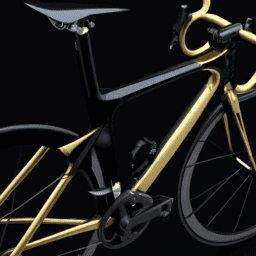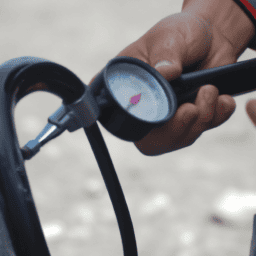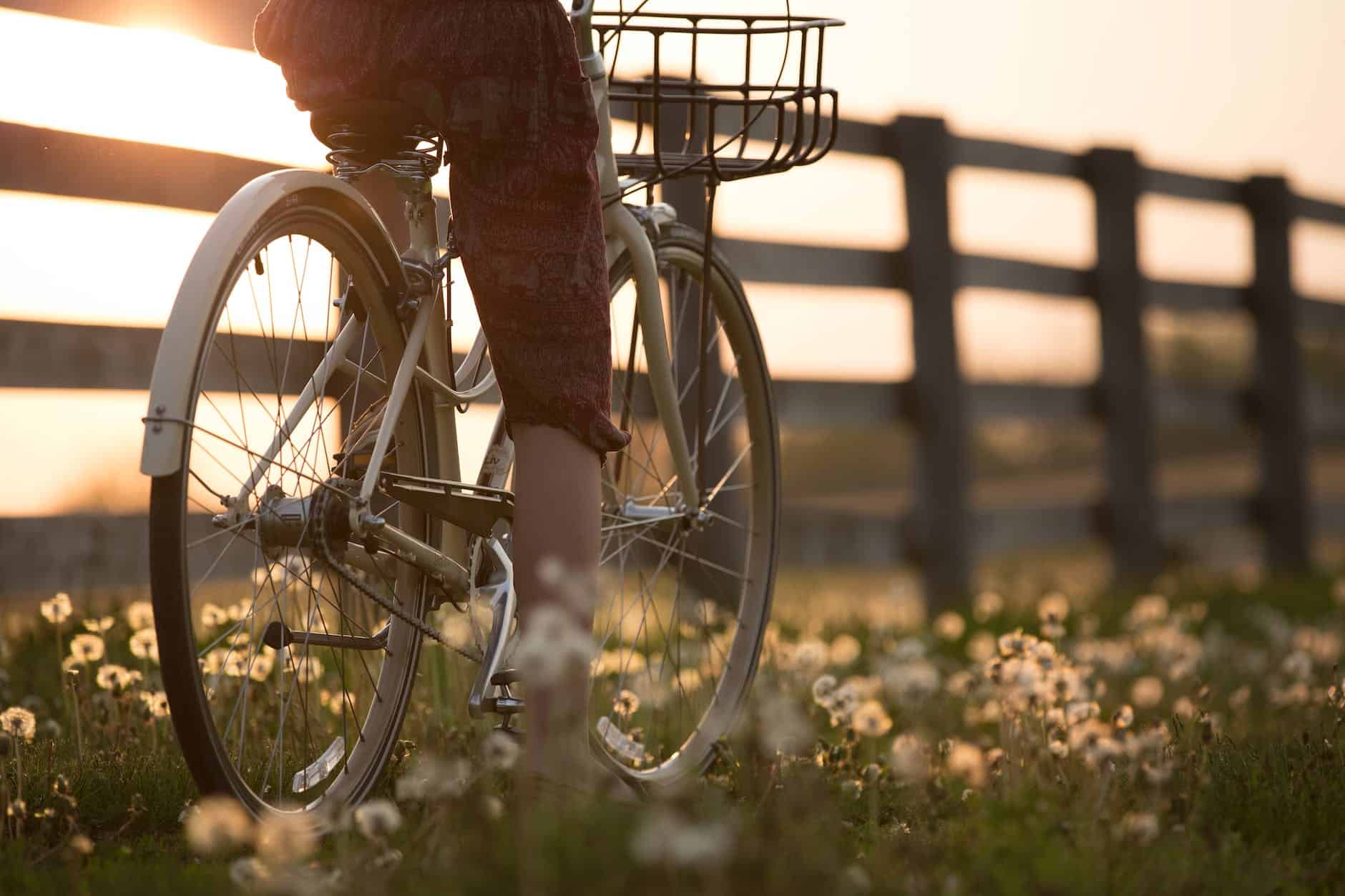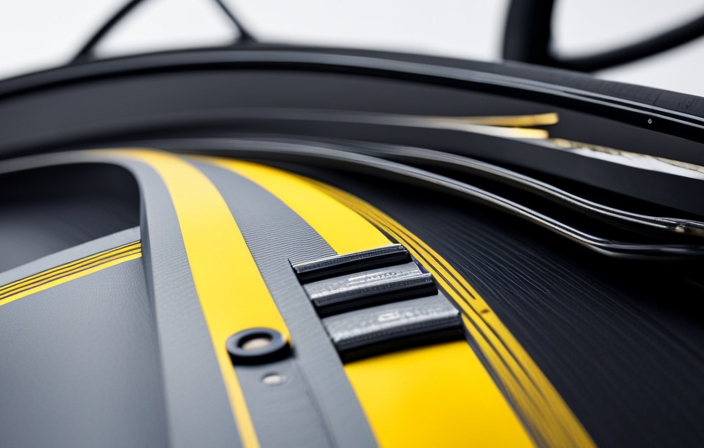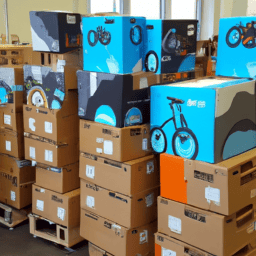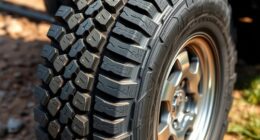Being passionate about cycling and having a penchant for luxury, the realm of premium bicycles and their astonishingly high price tags has always captured my fascination.
From custom-made frames to exclusive components, the most expensive bicycles in the world are more than just a mode of transportation – they are a statement of wealth and status.
But what exactly makes a bicycle expensive? Is it the materials used in its construction, the intricacy of its design, or the exclusivity of its components?
In this article, I will explore the world of high-end bicycles, the factors that affect their prices, and ultimately, unveil the most expensive bicycle in the world.
So buckle up, grab your helmet, and let’s dive into the world of opulent cycling.
Key Takeaways
- Luxury bicycles are a statement of wealth and status, often made from rare and luxurious materials like carbon fiber, titanium, and gold.
- Advancements in technology and materials, such as carbon fiber and 3D printing, have led to the creation of faster, lighter, and more durable bicycles.
- Luxury bicycle brands like Trek offer customization options through their Project One program, allowing customers to create their own unique bike.
- The most expensive bicycle to date is The House of Solid Gold’s 24K Gold Extreme Mountain Bike, sold for $1 million, with other expensive options including the Aurumania Gold Bike Crystal Edition and the PG Bugatti Bike.
The Evolution of High-End Bicycles
Let’s take a ride through the fascinating history of high-end bicycles, from their humble beginnings to the cutting-edge designs of today.
High-end bicycles have come a long way since the early days of cycling. In the early 19th century, bicycles were simple machines with wooden frames and metal wheels. However, as technology improved, so did the quality of bicycles. Today, high-end bicycles are designed with state-of-the-art materials and customization options that allow riders to tailor their bikes to their specific needs.
One of the key factors that have driven the evolution of high-end bicycles is the impact of fashion trends. As the popularity of cycling grew, so did the demand for bikes that were not only functional but also stylish. This led to the development of customized bicycles that reflected the personal tastes and preferences of their owners.
Today, high-end bicycles are often designed with a particular aesthetic in mind, with colors, graphics, and materials chosen to reflect the rider’s personality and style. With these factors in mind, it’s no wonder that high-end bicycles can be some of the most expensive on the market.
As we move into the next section, it’s important to understand that it’s not just fashion trends that impact the price of bicycles. There are a variety of other factors that contribute to the cost of a high-end bike, including the materials used in construction, the quality of the components, and the level of craftsmanship involved in the manufacturing process.
The Top Factors that Affect Bicycle Prices
When it comes to the prices of bicycles, there are several key factors that come into play.
Firstly, the materials and components used in the construction of the bike can significantly affect its cost.
Secondly, the reputation of the brand also plays a crucial role in determining a bike’s price.
Lastly, the rarity of the bike, whether it’s a limited edition or a custom-made model, can also drive prices up.
As a knowledgeable cyclist, I understand the importance of these factors and how they can impact the overall cost of a high-quality bicycle.
Materials and Components
You might be surprised to learn that the most expensive bicycles are crafted from rare and luxurious materials like carbon fiber, titanium, and gold. These materials not only contribute to the high price tag but also guarantee the durability, strength, and performance of the bike.
However, with the growing concern for sustainability efforts in high-end bicycle production, manufacturers are looking for ways to implement eco-friendly practices. This includes using recycled materials, reducing waste during production, and minimizing the carbon footprint of the manufacturing process. Furthermore, ethical sourcing of materials for high-end bicycles is becoming a priority for many companies. This means ensuring that the materials used are obtained from ethical sources that do not exploit labor or harm the environment.
As important as materials are, brand reputation and rarity are also key factors that contribute to the high prices of bicycles. Brands with a long history of producing high-quality and innovative bikes have established themselves as leaders in the industry, and their reputation alone justifies the high prices. Additionally, rare or limited-edition bikes that are only produced in small quantities are highly sought after by collectors, enthusiasts, and athletes, which drives up the prices even further.
In the end, a combination of materials, brand reputation, and rarity make the most expensive bicycles a true status symbol in the cycling world.
Brand Reputation and Rarity
If you’re a fan of cycling, chances are you’ve heard of the legendary brand Trek, which has been producing top-quality bikes for over 40 years and boasts a loyal following of enthusiasts around the world.
Trek’s marketing strategies are top-notch, and they have managed to create a brand that is synonymous with high-performance cycling. One of the ways they achieve this is through their Project One program, which allows customers to create their own unique bike from scratch.
With over one million possible combinations of frames, colors, components, and accessories, the possibilities are endless. This program has helped Trek create a niche market of high-end custom bikes that cater to the most discerning cyclists.
While new custom bikes can be expensive, there is also a pre-owned market for high-end bikes that can be just as rare and sought-after. Rarity is another factor that determines the value of a bike, and the pre-owned market for rare bikes can be extremely lucrative.
Some of the most expensive bikes in the world are vintage models that are no longer in production, and their rarity has made them highly coveted by collectors. However, the most expensive bicycle in the world is a modern creation that was handcrafted by a luxury Italian brand and will set you back a cool $1 million. But more on that in the next section.
The Most Expensive Bicycle in the World
Hey there, ready to hear about the most expensive bicycle in the world? Well, you’re in for a treat!
The most expensive bicycle to date is the 24K Gold Extreme Mountain Bike by The House of Solid Gold, which was sold for a record-breaking price of $1 million. What makes this bicycle so unique is not only its price tag, but also the extravagant design features that are incorporated into it, including a 24-karat gold frame, 600 black diamonds, and 500 golden sapphires.
This bike is not just a mode of transportation, but a work of art. However, the 24K Gold Extreme Mountain Bike is not the only luxurious bicycle worth mentioning.
Other bikes that have made headlines for their high prices and unique features include the Aurumania Gold Bike Crystal Edition, which features a 24-karat gold-plated frame and 600 Swarovski crystals, and the Trek Madone Butterfly, which was created in collaboration with artist Damien Hirst and features real butterfly wings encased in resin on the frame.
These bikes may not have broken the record for the most expensive bicycle, but they still represent the epitome of luxury in the cycling world.
Other Luxurious Bicycles Worth Mentioning
When it comes to luxury bicycles, it’s often said that you get what you pay for, and the Aurumania Gold Bike Crystal Edition and Trek Madone Butterfly are no exception with their gold-plated frames and unique features. However, there are other luxurious bicycles on the market that are worth mentioning.
These bicycles stand out for their custom designs and celebrity collaborations. First on the list is the Vanhulsteijn Cyclone, a Dutch-made bicycle that features a unique frame design made from stainless steel. It is a collaboration with artist Piet Hein Eek, and it boasts a sleek and minimalist style.
Next is the PG Bugatti Bike, a partnership between luxury car manufacturer Bugatti and bicycle maker PG. This bicycle features a carbon fiber frame and a design inspired by the Bugatti supercar. Finally, there is the Moulton XTB, a custom bicycle designed for Sir Paul Smith. It features a unique color scheme and a sturdy frame that can handle both on-road and off-road cycling. These luxurious bicycles are not only functional but also a work of art.
Looking ahead to the future of high-end bicycles, it’s clear that custom designs and celebrity collaborations will continue to play a significant role. Manufacturers will push the limits of design and technology to create bicycles that offer the ultimate in luxury and performance. As customers demand more personalized options, we can expect to see more bespoke bicycles that cater to individual tastes and preferences.
With the rise of e-bikes and the increasing popularity of cycling as a means of transportation, it’s an exciting time for high-end bicycles.
The Future of High-End Bicycles
As a passionate cyclist, I’m thrilled to discuss the future of high-end bicycles.
One of the key factors driving this industry forward is the constant advancements in technology and materials. From carbon fiber frames to electronic shifting systems, manufacturers are pushing the boundaries to create the most efficient and high-performing bikes.
Additionally, the growing demand for luxury cycling is fueling the development of even more exclusive and expensive models, catering to the needs and desires of elite riders.
Advancements in Technology and Materials
You’ll notice that advancements in technology and materials have led to a significant increase in the price of high-end bicycles. One of the most notable advancements is the use of carbon fiber, which has revolutionized the manufacturing of bicycle frames. Carbon fiber is a lightweight and strong material that has replaced traditional materials such as steel and aluminum. This innovation has allowed for the production of frames that are lighter, stiffer, and more aerodynamic, resulting in faster and more efficient rides.
Additionally, the use of 3D printing applications has revolutionized the production of bicycle components, allowing for more precise and customized parts. The combination of these advancements has led to an increase in the price of high-end bicycles. The use of carbon fiber and 3D printing applications has made it possible to create bicycles that are faster, lighter, and more durable than ever before.
As a result, the demand for luxury cycling has grown, and manufacturers are continually pushing the boundaries of technology and materials to create the ultimate high-end bicycle.
The Growing Demand for Luxury Cycling
The demand for luxury cycling is skyrocketing due to advancements in technology and materials. Cyclists are always looking for the latest and greatest in equipment, and luxury cycling offers just that.
With the use of high-end materials such as carbon fiber and titanium, bicycles are becoming faster, lighter, and more durable than ever before. Customization options are also a huge draw for luxury cyclists. From choosing the color of the frame to adding personalized touches, cyclists can create a one-of-a-kind bike that speaks to their individual style and needs.
Additionally, celebrity endorsement has also played a role in the growing popularity of luxury cycling. High-profile athletes and celebrities have been seen riding these high-end bicycles, further solidifying their status as a must-have item for serious cyclists.
All in all, the demand for luxury cycling is only going to continue to rise as technology and materials continue to advance, allowing for even more impressive and innovative bicycles.
Frequently Asked Questions
How do high-end bicycles compare to regular bicycles in terms of performance and durability?
High-end bicycles offer unparalleled performance and durability compared to regular bicycles. With endless customization options, maintenance requirements are minimal. Trust me, these bikes are worth every penny and will exceed your expectations.
Are there any specific materials that are commonly used in the production of high-end bicycles?
Costly materials such as carbon fiber, titanium, and high-grade aluminum are commonly used in the manufacturing process of high-end bicycles. The use of these materials results in lightweight and durable frames, contributing to improved performance and ride quality.
What are some of the most unique features found on high-end bicycles?
It’s fascinating how high-end bicycles combine advanced technology with design trends. From carbon fiber frames to custom paint jobs, these bikes are a sight to behold. Whether it’s the minimalist look or the unique features, they’re worth every penny.
Are there any notable athletes or celebrities known for owning expensive bicycles?
I know that many famous athletes and celebrities own luxury brand bicycles. Some notable owners include Lance Armstrong, David Beckham, and Leonardo DiCaprio. These high-end bicycles can cost upwards of tens of thousands of dollars.
What impact does the market for high-end bicycles have on the cycling industry as a whole?
Market trends for high-end bicycles have a significant impact on the cycling industry. Consumer behavior shows that the demand for luxury bikes is increasing, driving innovation and competition. This trend is expected to continue in the future.
Conclusion
So there you have it, the most expensive bicycle in the world is the 24k gold-plated Aurumania Crystal Edition. However, it’s important to note that the price of a bicycle is not solely determined by its materials and design, but also by the reputation of the brand and the exclusivity of the product.
As technology and innovation continue to advance, we can expect to see even more luxurious and high-end bicycles on the market. But for most of us, a reliable and comfortable bicycle that fits our needs and budget is all we need to enjoy the benefits of cycling.
Regardless of how much we spend on our bicycles, it’s the joy and freedom that comes with riding that matters most.
